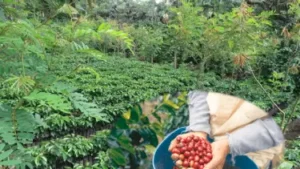[ez-toc] Description
Description
Discover the complexities and realities of Fair Trade. Understand its impact on producers, consumers, and the global market. #FairTrade #EthicalConsumerism
Introduction
Fair Trade is a buzzword in today’s global marketplace, but what does it truly mean? As consumers, we often see Fair Trade labels on coffee, chocolate, and textiles, but how do these certifications impact producers and the market? This comprehensive guide delves into Fair Trade, shedding light on its benefits, challenges, and future, while exploring how Australia can use its monetary sovereignty to promote ethical trade.
I. Understanding Fair Trade
Definition and Origins
Fair Trade is a global movement aimed at ensuring fair wages and safe working conditions for producers in developing countries. It appeared in the 1940s as a response to the exploitation of workers in the global South. The first Fair Trade organization, Ten Thousand Villages (formerly Self-Help Crafts), was set up in 1946 to sell handcrafted goods from disadvantaged artisans. Over time, the movement grew, incorporating agricultural products and setting up certification standards to guarantee ethical practices.
Key Principles
Fair Trade is grounded in several key principles:
– Fair Wages and Safe Working Conditions: Producers receive a living wage that covers the cost of living and ensures they can support their families.
For example, Fair Trade-certified coffee farmers in Latin America often earn significantly more than non-certified farmers, allowing them to invest in their communities.
– Community Development: Fair Trade premiums (extra funds paid on top of the selling price) are invested in community projects such as schools, healthcare facilities, and infrastructure.
A notable example is the construction of clean water systems in Fair Trade tea-growing regions of India.
– Environmental Sustainability: Fair Trade promotes sustainable farming practices, such as organic farming, which reduces the use of harmful chemicals. In Peru, Fair Trade cocoa farmers use agroforestry techniques to preserve biodiversity and protect the environment.
II. Fair Trade Certification
Certification Process
Obtaining Fair Trade certification involves rigorous steps:
– Application: Producers apply to certifying bodies such as Fairtrade International, Rainforest Alliance, or Fair-Trade USA.
– Evaluation: An assessment of the producers’ practices against Fair Trade standards, including labor conditions, environmental practices, and economic transparency.
– Certification: If standards are met, certification is granted, allowing products to carry the Fair-Trade label. For example, the Fairtrade International certification involves a thorough audit and continuous monitoring to ensure compliance.
Criteria for Certification
Fair Trade certification criteria include:
– Labour Standards: Ensuring fair wages, the absence of child labor, and safe working conditions. For instance, Fair Trade-certified coffee plantations in Ethiopia provide workers with protective equipment and fair pay.
– Environmental Criteria: Encouraging sustainable farming practices, such as crop rotation and reduced pesticide use. In Kenya, Fair Trade flower farms implement water conservation techniques and use natural pest control methods.
– Economic Requirements: Transparency in financial transactions and fair pricing structures. This includes setting a minimum price that covers the cost of sustainable production and provides a safety net for farmers during market fluctuations.
III. The Impact on Producers
Economic Benefits
Fair Trade offers significant economic benefits:
– Increased Income: Producers receive a fair price for their goods, often higher than market rates. For example, Fair Trade cocoa farmers in Ghana earn a premium that helps them afford education and healthcare for their families.
– Market Access: Fair Trade opens international markets, providing a broader customer base. Nicaraguan coffee farmers have reported increased sales and stability due to their access to Fair Trade markets.
Social and Community Development
Fair Trade’s community investments lead to:
– Improved Infrastructure: Fair Trade premiums are used to build schools, healthcare facilities, and clean water systems. In Sri Lanka, Fair Trade tea plantations have funded the construction of community centres and educational programs.
– Better Healthcare and Education: Enhanced access to essential services improves quality of life. For instance, Fair Trade banana cooperatives in the Dominican Republic have invested in health clinics and school supplies for children.
Challenges Faced
Despite these benefits, producers face challenges:
– Certification Costs: The cost of certification can be a barrier for small producers. Many cooperatives require external funding or loans to cover these expenses.
– Market Competition: Competing with non-Fair-Trade products can be tough due to higher prices. Fair Trade producers often need to find niche markets or rely on consumer awareness to justify the price premium.
IV. The Consumer Perspective
Ethical Consumerism
Consumers are increasingly aware of ethical issues:
– Rising Awareness: A growing number of consumers demand ethically sourced products. The rise of movements like “Buy Local” and “Slow Food” reflects this shift.
– Willingness to Pay: Many are willing to pay a premium for Fair Trade goods, supporting fair wages and safe conditions. A survey by Globe Scan found that 64% of consumers are willing to pay more for products that help producers.
Product Range
Fair Trade products span various categories:
– Types of Products: Coffee, chocolate, tea, textiles, bananas, and more. Fair Trade clothing, made from organic cotton, is gaining popularity as consumers seek sustainable fashion options.
– Growth: The variety of Fair-Trade products continues to expand. Fair Trade gold and sports balls are recent additions to the market, highlighting the movement’s versatility.
Consumer Scepticism
However, scepticism persists:
– Effectiveness and Transparency: Concerns about whether Fair Trade truly benefits producers. Some critics argue that Fair Trade premiums do not always reach the intended beneficiaries.
– Misleading Labels: Some products carry misleading labels, diluting trust. For example, “Fair Trade-style” labels that mimic certification logos can confuse consumers and undermine authentic Fair-Trade efforts.
V. Criticisms and Controversies
Economic Viability
Fair Trade faces criticism about its economic sustainability:
– Debate: Some argue that it doesn’t provide long-term benefits. Critics like Paul Collier suggest that Fair Trade can create dependency rather than fostering economic independence.
– Sustainability: Questions about whether Fair Trade can sustain itself economically. The prohibitive costs of certification and market access can limit the reach of Fair-Trade initiatives.
Market Limitations
Fair Trade’s market share is limited:
– Limited Reach: Fair Trade products make up a small part of the global market. Despite growth, Fair Trade coffee is less than 2% of the global coffee market.
– Scaling Challenges: Difficulty in scaling up initiatives to have a broader impact. Many small producers struggle to meet the volume demands of large retailers while keeping Fair Trade standards.
Alternative Models
Exploring other ethical trade models:
– Direct Trade: Emphasizes direct relationships between producers and consumers, often bypassing intermediaries to ensure more profits for farmers. Direct Trade coffee roasters work closely with farmers to ensure quality and fair prices.
– Organic Certification: Focuses on sustainable farming but not necessarily fair wages. Organic products can be Fair Trade certified, but not all are, and the emphasis is primarily on environmental sustainability.
VI. Case Studies
Success Stories
Highlighting successful Fair-Trade initiatives:
– Transformed Communities: Examples of communities uplifted by Fair Trade. In Honduras, Fair Trade coffee cooperatives have invested in education and infrastructure, significantly improving living standards.
– Notable Enterprises: Businesses making a significant impact through Fair Trade. Divine Chocolate, co-owned by cocoa farmers in Ghana, exemplifies how Fair Trade can empower producers and create successful business models.
Lessons Learned
Insights from various Fair-Trade projects:
![]() – Successful Strategies: What has worked well in Fair Trade initiatives. Cooperative models and community involvement have proven effective in ensuring Fair Trade principles are upheld.
– Successful Strategies: What has worked well in Fair Trade initiatives. Cooperative models and community involvement have proven effective in ensuring Fair Trade principles are upheld.
– Areas for Improvement: Challenges and how they can be addressed. Streamlining certification processes and increasing transparency can enhance trust and efficiency in Fair Trade systems.
VII. The Future of Fair Trade
Trends and Innovations
The future holds promise with latest trends:

– Technological Advancements: Technology supporting transparency and efficiency. Blockchain technology is being explored to track Fair Trade products from farm to consumer, ensuring authenticity and reducing fraud.
– Emerging Markets: New regions adopting Fair Trade practices. Southeast Asia and Africa are seeing growth in Fair Trade certification, expanding the movement’s global reach.
Policy and Advocacy
The role of policy in promoting Fair Trade:
– Government Support: How governments can support Fair Trade initiatives. Policies that promote ethical sourcing and provide subsidies for certification can bolster Fair Trade efforts.
– Advocacy Efforts: NGOs and activists pushing for broader adoption of Fair Trade. Organizations like Fair Trade Advocacy Office work to influence policy and increase consumer awareness globally.
VIII. Leveraging Australia’s Monetary Sovereignty
Australia has the unique advantage of monetary sovereignty, meaning it can create its own currency and fund domestic initiatives without relying on external funding. This can be a powerful tool in promoting Fair Trade.
Government Initiatives
Australia can use its monetary sovereignty to fund Fair Trade initiatives:
– Subsidies for Certification: Providing financial support to cover certification costs for Australian producers and international suppliers can increase participation in Fair Trade.
– Incentives for Ethical Sourcing: Offering tax breaks or grants to businesses that source Fair Trade products can encourage more companies to adopt ethical practices.
Public Awareness Campaigns
The government can fund public awareness campaigns to educate consumers about the benefits of Fair Trade:
– Educational Programs: Investing in school and community programs to teach the importance of ethical consumerism.
– Marketing Campaigns: Using public funds to create nationwide campaigns promoting Fair Trade products, like the successful “Buy Australian” campaigns.
Supporting Local Fair-Trade Producers
Monetary sovereignty allows Australia to support its local Fair-Trade producers:
– Investment in Infrastructure: Funding for infrastructure improvements in regions producing Fair Trade goods, such as better transportation and storage facilities.
– Research and Development: Allocating funds for R&D to improve sustainable farming practices and increase the efficiency of Fair-Trade production.
Summary
Fair Trade offers a pathway to ethical and sustainable trade, helping producers and consumers alike. Despite challenges, it is still a vital movement promoting fairness and sustainability in the global market. By supporting Fair Trade, consumers can contribute to a more just and fairer world. Australia, with its monetary sovereignty, can play a crucial role in enhancing Fair Trade initiatives both locally and globally.
Question for Readers
How can you contribute to the growth and effectiveness of Fair Trade in your daily life?
Call to Action
Join the movement for ethical consumerism. Choose Fair Trade products and support sustainable, fair practices.
Social Sharing
Please share this article with your contacts and on social media to spread the word about the importance of Fair Trade.
References
Fairtrade Internationa: https://www.fairtrade.net/
Rainforest Alliance: https://www.rainforest-alliance.org/
Ethical Consumer: https://www.ethicalconsumer.org/
